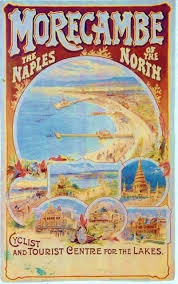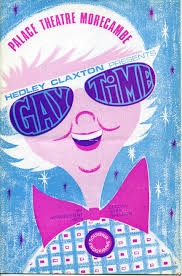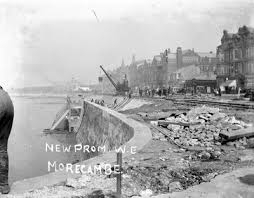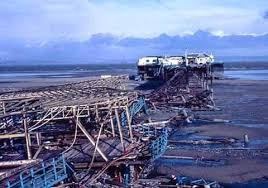
Railway posters were a colourful way of advertising destinations across the country. For seaside towns like Morecambe which wouldn’t have existed but for the railways they were especially important, drawing people in for day trips or longer visits.
There was a vogue for linking places to better known counterparts, a well-known example being Edinburgh as The Athens of the North. Morecambe and its bay were linked in this poster with the Bay of Naples though its mountain backdrop didn’t run to an active volcano like Vesuvius.
Another of these parallels was drawn in 1937 when the Hydro at the Broadway Hotel was opened by the Mayor, Charles Howes who styled Morecambe as The Droitwich of Lancashire (Droitwich being a Midlands spa town). You do wonder whether these parallels ever worked in reverse – was Naples, for instance, ever publicized as The Morecambe of the South?
The main aerial view in the poster shows Morecambe seafront as a single curve with the West End Pier, Stone Jetty and Central Pier jutting out into the sea. Recognisable landmarks along the promenade include the Alhambra, Winter Gardens and Tower. These appear again in some of the views below: the West End promenade with the Stone Jetty beyond, Alhambra, Royalty Theatre and Opera house, Winter Gardens and Tower. The Tower is shown as planned rather than as built, so the date given for the poster as c1905 is about right (the Tower dates from 1909).
The poster also promoted Morecambe as a cycling centre and tourist centre for the Lake District, both shown in the upper middle view.


